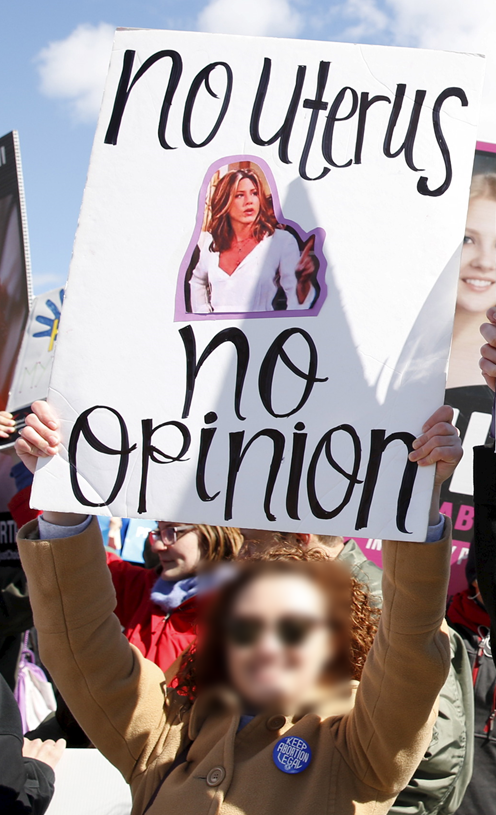The crux of Whole Woman’s Health v. Hellerstedt—today’s landmark abortion rights case—is straightforward enough to state in a single sentence: “Both the admitting-privileges and the surgical-center requirements place a substantial obstacle in the path of women seeking a previability abortion, constitute an undue burden on abortion access, and thus violate the Constitution.” (Slip Opinion, Syllabus, p. 3).
This should come as welcome news for roughly 5.5 million Texas women of childbearing age, or at least for those who are not devoted to bearing children full-time. As for the rest of us, we are not properly entitled to have an opinion.

Just kidding, of course. Anyone who can count the number of ovaries on the high court should see that abortion-rights activists need at least a couple of male allies with well-reasoned opinions in order to win the day. Thankfully, they got both Kennedy and Breyer this time around.
Part of how they managed to win over a couple of old guys (with relatively little personal experience of unwanted pregnancy) was by undertaking academic research in order to measure the impact of supply-side restrictions on abortion access. For example, this study [full text] by Daniel Grossman and a diverse team of experts shows how Texas’ TRAP laws were intelligently designed to achieve a specific effect:
In May 2013, there were 41 facilities providing abortion in Texas; this decreased to 22 in November 2013. Both clinics closed in the Rio Grande Valley, and all but one closed in West Texas. Comparing November 2012–April 2013 to November 2013–April 2014, there was a 13% decrease in the abortion rate (from 12.9 to 11.2 abortions/1000 women age 15–44). Medical abortion decreased by 70%, from 28.1% of all abortions in the earlier period to 9.7% after November 2013 (p<0.001). Second-trimester abortion increased from 13.5% to 13.9% of all abortions (p<0.001). Only 22% of abortions were performed in the state’s six [ambulatory surgical centers].
If you’re into data visualization, check out Figure 1 from the Grossman article, wherein you can see the clinics shutting their doors over time, confining themselves to handful of large urban areas. This was, quite naturally, the desired effect of the laws in question, however much the State of Texas tried to dance around it at oral argument.
In addition to the studies about clinic closures and their impacts on women, medical academia also played a vital role in demonstrating that Texas laws were not designed to solve an actual problem. The District Court (two levels below the Supreme Court) considered, among other things, “A collection of at least five peer-reviewed studies on abortion complications in the first trimester, showing that the highest rate of major complications—including those complications requiring hospital admission—was less than one-quarter of 1%” along with “[T]hree peer-reviewed studies showing that the highest complication rate found for the much rarer second trimester abortion was less than one-half of 1%” and “a study of complications occurring within six weeks after 54,911 abortions that had been paid for by the fee-for-service California Medicaid Program” which provided more relevant statistics on incidence rates for post-abortion complications.
After reviewing all that (and more), the high court “found nothing in Texas’ record evidence that shows that, compared to prior law (which required a ‘working arrangement’ with a doctor with admitting privileges), the new law advanced Texas’ legitimate interest in protecting women’s health.”
Science reveals to us facts about the world which we should be able to understand and accept regardless of what sexual identity or personal history we bring to the table. I am grateful that our judiciary (at least in part) understands the value of bringing empirical research to the table instead of merely relying upon their own intuitions about how the world works. Would that our other national institutions would learn to follow their lead. Congress, I’m looking at you.
